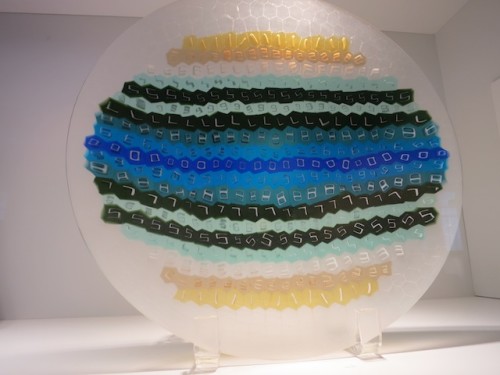
Numeri(Numbers) Plate, Laura de Santillana at Corning Museum of Glass


Numeri(Numbers) Plate, Laura de Santillana at Corning Museum of Glass

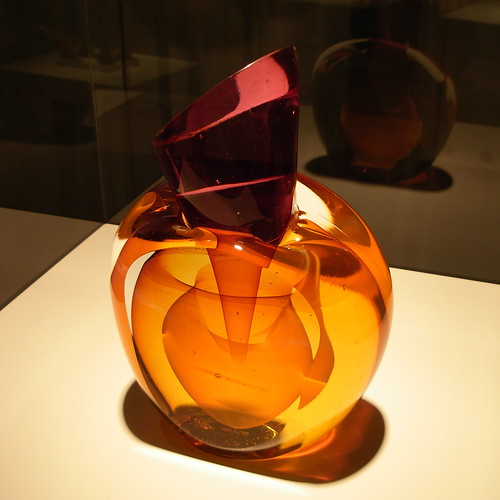
On my very first trip to Corning Museum of Glass in 1995, I was smitten with the work of Harvey K. Littleton, and intrigued by the idea that Studio Glass Art had not always existed. Littleton’s father Jesse was a physicist working at Corning, and his mother Bessie, turned her kitchen into a test kitchen, baking cakes in sawed off battery jars made of Corning’s Nonex glass, and custards in the ends of lamp chimneys. Heat resistant glass cookware is now part of our kitchen vocabulary. I grew up with Pyrex bowls, dishes and pans. But in 1913, it was all new. Harvey Littleton worked at Corning the summers, and eventually after getting a degree in Industrial Design proposed setting up a studio for experimenting with glass in different forms. Corning declined. As he relates in Harvey K. Littleton and the American Studio Glass Movement,
My idea was that there ought to be continuing, ongoing, aesthetic experimentation in material apart from production. But [Corning Glass Works] didn’t buy my proposal. They believed that architects made the best designers, where you made your designs on paper and didn’t fool around with the material…I thought form was born in the material and in the hands of the artist, and that a pencil was a…poor substitute…[resulting] in a very obvious and simplistic solution.
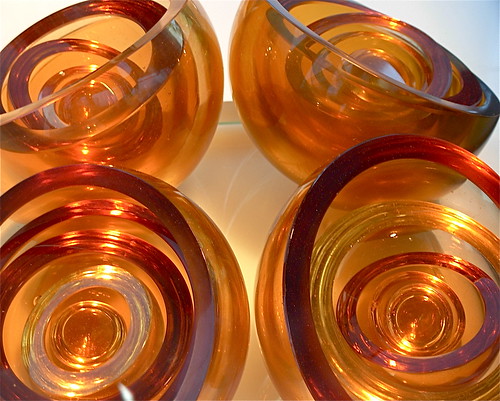
I am struck by the assumption made by Corning in 1947 that you made designs on paper and didn’t fool around with the material. Littleton recognized that glass would be an awesome material for artists to fool around with, and he wanted to find a way to make glass outside of a factory. Now we are somewhat accustomed to the idea of going to watch glassblowers at work, or even take a class at a local college or art organization, but Littleton was working against the assumption that it just wasn’t possible on a smaller scale, that glass was an industrial material.
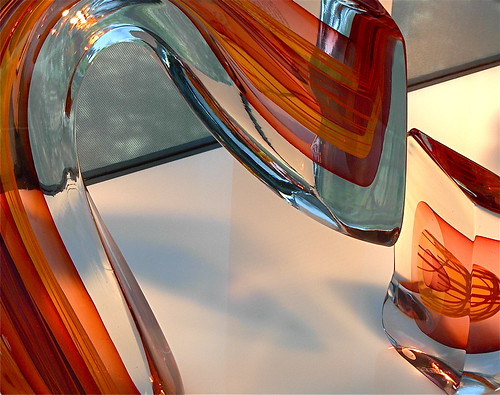
Littleton traveled to France and Italy, visiting artists who were working with glass, on their own. He stumbled upon Erwin Eisch at a glass school in Germany, and describes his excitement:
I saw [Eisch’s] work and I realized that he was doing what I wanted to do – play with the glass, to make forms that had no other reason for being than that he wanted to make them. Function was something to be used or not used. Totally free. Free with glass. . .
With all he had learned, Littleton, offered an experimental workshop in glass blowing for artists at the Toledo Museum of Art in 1962, and then began a graduate program at University of Wisconsin Madison, which seeded Studio glass programs at many other universities, and had students such as Marvin Lipofsky and Dale Chihuly. In celebration of the 50th Anniversary of the founding of the American Studio Glass Movement, The Art Alliance for Studio Glass has a many events planned including one at the Allentown Art Museum, The Lerner Contemporary Glass Collection, October 7, 2012-January 13, 2013.
Such delight has emerged from Harvey Littleton’s desire to bring glass to artists.
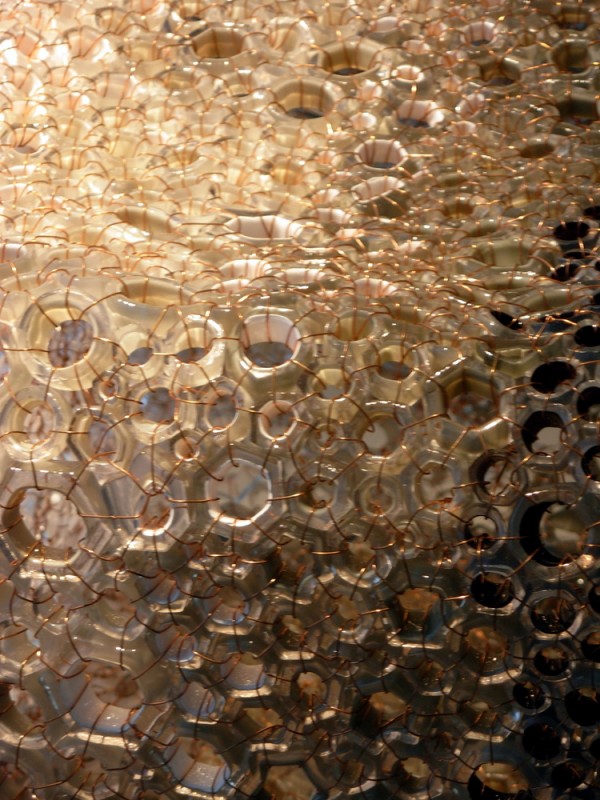
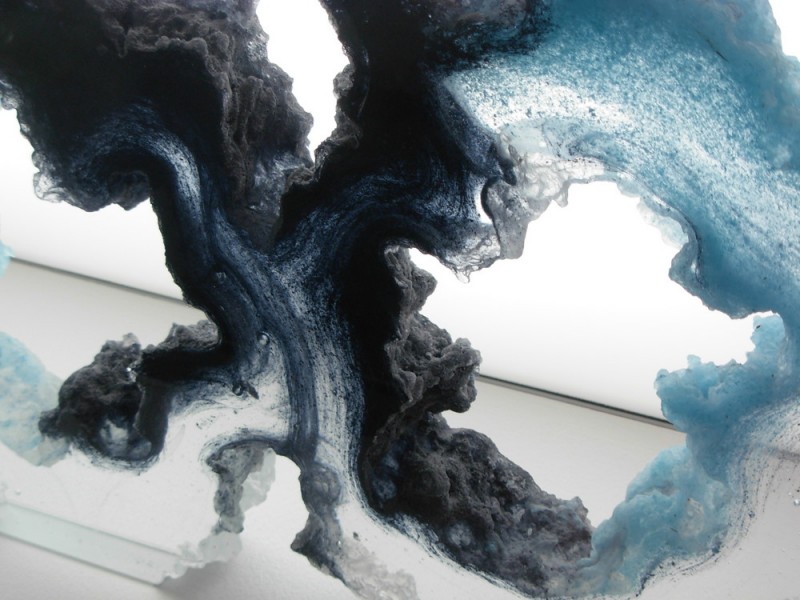

Figure-Eight Form R182 by Colin Reid.
Glass lovelies at my Pinterest

The Corning Museum of Glass always reveals some new delight with every visit Stratoz and I make. This time it was Mosaic with Fish by Leopold Forstner(1878-1936), with gorgeous enameled fish surrounded by glass chunks is subtle gradations of green, blue, copper and gold. There was iridescence and orange, and I stood there awhile just admiring the intensity.
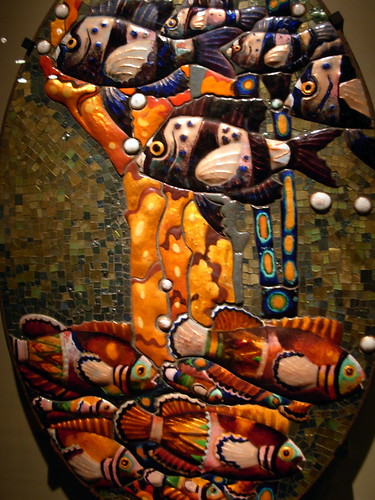
Leopold Forstner was part of a group of avant garde artists in Vienna at the turn of the 20th Century, and he was also known for his illustration and his textile designs. In trying to find more about Forstner, I came across a cool site, City of Memory, an online community map of personal stories and memories organized on a physical geographical map of New York City, and a story posted by a descendent of Forstner’s patron, and a chance encounter with a familiar mosaic. I love how City of Memory pairs the physical world with the emotional one, and shows how one can evoke the other. I could imagine mapping out my memories of Corning Museum of Glass, and how it has become our place of pilgrimage, of refreshment and joy as we grow in our own glass art, and our partnership.

More orange goodness at my Orange Tuesdays Pinterest Board.
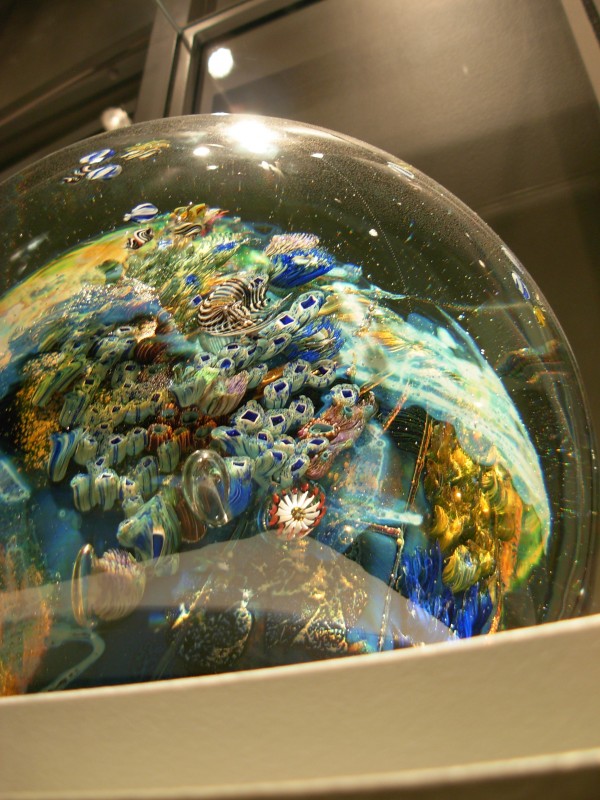
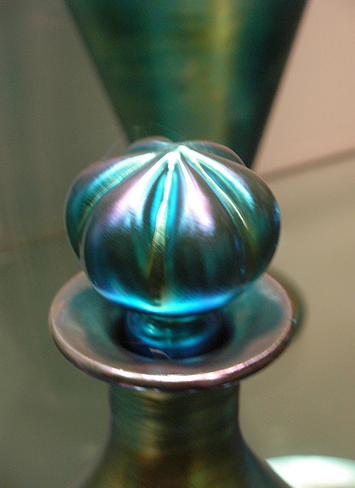
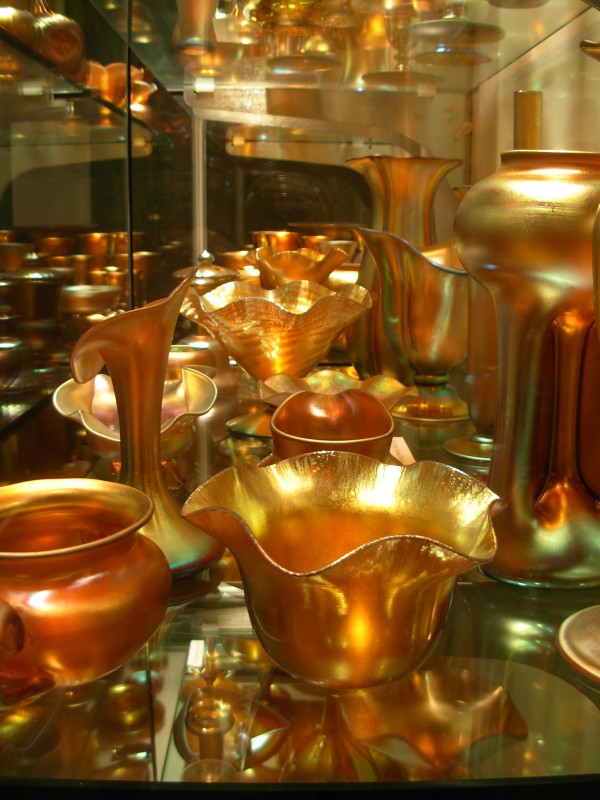
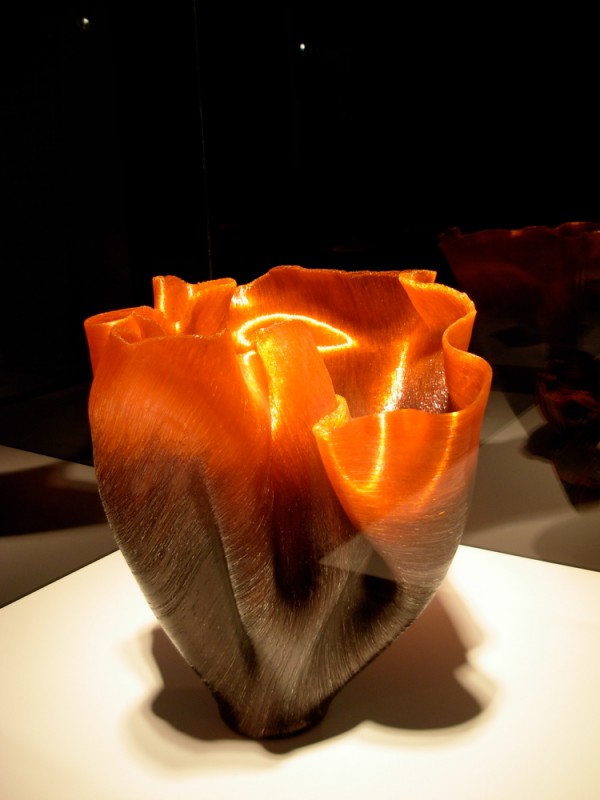
In 2011, Stratoz and I went to the Rochester Jazz Festival on vacation, and maybe this is why I at first when I saw this sculpture at the Corning Museum of Glass(CMOG) on our way back from the festival, I assumed the artist was a man. The name is Toots Zynsky, and I immediately thought of Toots Thielmans, Belgian jazz harmonica player.
But then, as I was looking at this amazing glass vessel, Incantatrice(Sorceress), I heard a woman’s voice emanating from the video monitor, describing her work with glass threads, filet de verre. It makes me happy to discover another woman who is making art with a passion and innovation. She helped create a machine to pull glass threads, and then evolved a technique of laying the threads in a pattern, putting them in a kiln, and finally squeezing the hot glass to get her undulating vessels.
Zynsky was part of the beginnings of the Studio Glass movement in the US, and studied with Dale Chihuly in the 1970’s. Using glass as a medium for art was new territory in the modern art world. As Zynsky says in her bio on the CMOG site:
Glassmaking was wide open. . . Hot glass slipped through the air, pulled and stretched. There was music and the furnaces were roaring. . . and everyone was working in concert. . . It was this material that hadn’t been widely explored as an artist’s medium. Everything was possible, and there was so much to be discovered. There were no rules. You could do anything you wanted.
The first words I heard from Toots Zynga were, “When I hear music, it translates into color.” A musician of color, and a wonderful way to follow the Rochester Jazz Festival. Check out this video to see her at work: